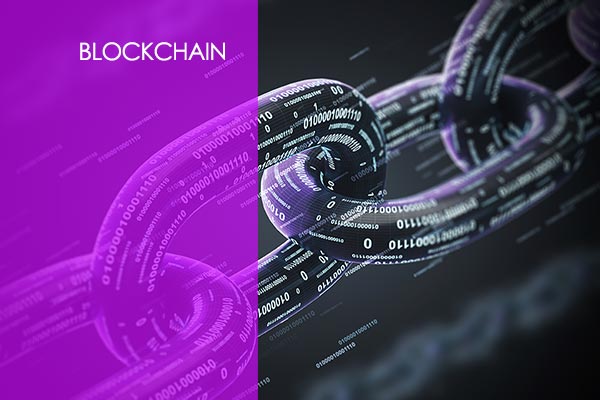Ah, blockchain! It’s like the digital equivalent of knitting – except instead of scarves, you’re weaving complex layers of secure, transparent, and immutable data. So, how do you jump into this world of cryptographic stitches and ledger loops? Let’s unravel this enigma together in a way that even your tech-averse aunt might understand (or not). After all, understanding how to write blockchain code is not just about the code itself; it’s about envisioning the endless possibilities of a decentralized future.
The ABCs of Blockchain Code: Understanding the Basics
Before diving into the deep end of the coding pool, it’s crucial to understand what blockchain is. Think of it as a chain of digital blocks, each containing data, bound together by cryptographic principles. It’s like a digital ledger that everyone can see, but no one can secretly edit – a nightmare for the diary-snooping siblings of the world. This transparency and security are what make blockchain technology revolutionary.
Now, when we talk about “blockchain code,” we’re referring to the programming languages and scripts used to create these chains. It’s the blueprint for constructing your very own digital fortress of data. When looking at a blockchain code example, you’ll notice it’s more than just lines of code – it’s a meticulously crafted sequence of algorithms and protocols. Whether it’s a simple blockchain or a complex system, the principles remain the same.

Certified Blockchain Developer – Hyperledger (CBDH)
Seize the future with our Certified Blockchain Developer – Hyperledger (CBDH) course! Ideal for engineers and developers, this course is your ticket to Blockchain Training Alliance Certification. Master blockchain now and lead the tech revolution!
Choosing Your Toolbox: Languages for Blockchain Development
When pondering how to program blockchain, one must choose their tools wisely. The most popular languages are Solidity for Ethereum, JavaScript for its ubiquity, and Python for its simplicity – kind of like choosing between a Swiss Army knife, a trusty hammer, or that gadget you bought off a late-night infomercial.
Solidity: The Ethereum Whisperer
Solidity, the star of the Ethereum platform, is specifically designed for creating smart contracts. It’s not just about writing code; it’s about embedding rules and agreements into the blockchain itself. Solidity allows developers to write applications that implement self-enforcing business logic embedded in the blockchain, leaving a trail that is transparent and irreversible. So, if you’re keen on how to code a blockchain for creating decentralized applications, Solidity is your go-to language.
JavaScript: The Jack of All Trades
JavaScript’s role in blockchain development cannot be overstated. Its ubiquity in web development makes it a versatile tool in the blockchain toolkit. When it comes to designing the front end of blockchain applications, JavaScript is unrivaled. It allows for the creation of user-friendly interfaces, making blockchain technology more accessible to the masses. So, if you’re looking at how to code blockchain that interacts smoothly with users, JavaScript is your faithful companion.
Python: The Friendly Snake
For those who are just starting out and looking at how to code a simple blockchain, Python is a perfect choice. Its straightforward syntax and readability make it ideal for beginners. Python is great for prototyping and experimenting with blockchain concepts. It’s the language that demystifies what does blockchain code look like, making it less intimidating for newcomers.
In conclusion, choosing the right language for blockchain development depends on your project’s needs, your familiarity with the language, and the specific functionalities you want to implement. Whether it’s Solidity, JavaScript, or Python, each has its unique strengths that cater to different aspects of blockchain development. As you embark on this journey, remember, the world of blockchain is vast and ever-evolving. Stay curious, keep experimenting, and don’t be afraid to weave your own unique pattern in this vast tapestry of blockchain technology.
Solidity: The Ethereum Whisperer
Solidity is to Ethereum what love letters are to romance – absolutely essential. This programming language is specifically designed for crafting smart contracts on the Ethereum platform. It’s not just a tool; it’s the very essence of Ethereum’s soul. Solidity allows developers to write blockchain source code that brings decentralized applications to life. If Ethereum were a play, Solidity would be the scriptwriter, director, and possibly the stagehand. It’s the language that enables the creation of agreements that run exactly as programmed without any downtime, fraud, control, or interference from a third party. For those looking into how to code blockchain specifically for Ethereum, mastering Solidity is like learning to speak the native tongue of a digital nation.

Certified Blockchain Developer – Hyperledger (CBDH)
Seize the future with our Certified Blockchain Developer – Hyperledger (CBDH) course! Ideal for engineers and developers, this course is your ticket to Blockchain Training Alliance Certification. Master blockchain now and lead the tech revolution!
JavaScript: The Jack of All Trades
Ah, JavaScript, the old reliable. It’s like the duct tape of programming languages – versatile and everywhere. JavaScript is more than just a staple in web development; it’s a critical tool for blockchain development. Its ability to integrate seamlessly with web applications makes it a popular choice for crafting blockchain front-ends. When it comes to blockchain, JavaScript’s role transcends the usual; it bridges the gap between the complex blockchain backend and user-friendly interfaces. This makes it an invaluable asset for those interested in how to code a blockchain that is not just robust but also accessible. JavaScript’s versatility in blockchain development cannot be overstated, whether you’re designing intricate smart contracts or creating intuitive user interfaces.
Python: The Friendly Snake
Python, with its easy-to-read syntax, is like the friendly snake in the coding zoo. It’s an excellent choice for beginners delving into the world of blockchain. Python’s simplicity and readability make it ideal for those who are just starting to understand what does blockchain code look like. It can be used for various blockchain projects, especially those that value simplicity over complexity, like a simple blockchain. In the realm of blockchain development, Python serves as a gateway, offering a gentle introduction to more complex concepts. It’s the perfect starting point for those curious about how to write blockchain code without getting overwhelmed by the intricacies of more complex programming languages.
Crafting Your First Chain: A Basic Blockchain Code Example
Now, let’s roll up our sleeves and get our hands dirty with a bit of coding. We’re about to embark on the journey of creating a basic blockchain in Python, because, let’s be honest, it’s the closest we’ll get to feeling like a wizard without donning a robe and hat. This is your first step in learning how to code a blockchain from scratch.
Here’s a basic structure to start with:
- Define the block structure: This is where you specify what your block will look like. It usually includes data like transaction details, timestamps, and cryptographic hashes.
- Create a way to store the blockchain: You’ll need a secure method to store the blocks. In many cases, this is done through a list or a database, ensuring each new block is connected to the previous one.
- Add an algorithm to add new blocks securely: This is where things get interesting. You’ll implement a method to validate and add new blocks to the chain, ensuring the integrity of your blockchain.
Remember, this is just an appetizer in the banquet of blockchain development. But everyone starts with making toast before they move on to gourmet meals, right? This simple blockchain example is your first step towards understanding the more complex aspects of blockchain technology.
What Does Blockchain Code Look Like: Peeking Under the Hood
So, what does blockchain code look like? Imagine a digital game of Jenga, where each block contains a mix of data, a hash (a unique identifier, like a fingerprint), and the hash of the previous block. This intricate chain of hashes is what makes the blockchain secure – tamper with one block, and the whole structure shows signs of instability.
A blockchain source code is not just about storing data; it includes various elements essential for the smooth operation of the blockchain. These include:
- Mechanisms for creating blocks: This involves defining how data is structured and encrypted within a block.
- Validating transactions: Here, the code ensures that all transactions added to the blockchain are authentic and adhere to the network’s rules.
- Ensuring consensus across the network: This is crucial for maintaining the decentralized nature of the blockchain. The code must facilitate a consensus mechanism, like Proof of Work or Proof of Stake, to agree on the state of the ledger.
It’s like a symphony where every instrument needs to be in tune. Each line of code plays a crucial role in maintaining the harmony and security of the entire blockchain network.
Navigating Challenges: Tips for Aspiring Blockchain Developers
As you embark on your journey to code a blockchain, a few key pointers can help you navigate this exciting yet challenging field:
- Patience is key: Mastering blockchain development, much like learning to cook a perfect soufflé, takes time and practice. Understanding blockchain code, especially for complex projects, requires perseverance. Don’t get discouraged if your first blockchain code example doesn’t work as expected. Every error is a step towards mastery.
- Community is crucial: The blockchain community is an invaluable resource. Engage with other blockchain enthusiasts, join forums, attend meetups, and participate in hackathons. They’re like the supportive friends who encourage you to sing karaoke – even if you’re tone-deaf. In this community, you can share your blockchain code examples, get feedback, and learn from the experiences of others.
- Stay updated: Blockchain technology evolves at a breakneck pace, faster than fashion trends. To keep up, follow industry news, read the latest research, and experiment with new blockchain programming tools and techniques. This continual learning is essential for anyone wondering how to program blockchain effectively.

Certified Blockchain Developer – Hyperledger (CBDH)
Seize the future with our Certified Blockchain Developer – Hyperledger (CBDH) course! Ideal for engineers and developers, this course is your ticket to Blockchain Training Alliance Certification. Master blockchain now and lead the tech revolution!
Wrapping Up: Your Path to Becoming a Blockchain Code Maestro
There you have it – a beginner’s guide on how to code blockchain. Remember, every expert was once a beginner, so embrace the learning curve. With patience, community support, and a commitment to staying updated, you’ll soon find yourself more adept at blockchain development. And who knows? Maybe one day, you’ll be the one explaining blockchain in overly simplistic metaphors, or even better, pioneering innovative blockchain solutions.
Frequently Asked Questions: Demystifying Blockchain Code
What is the best language to start with when learning how to write blockchain code?
For beginners, Python is often recommended due to its simple syntax and readability. It’s ideal for grasping the fundamentals of how to code a blockchain. As you advance, languages like Solidity or JavaScript can be explored for more complex projects.
How difficult is it to create a simple blockchain?
Creating a simple blockchain isn’t as daunting as it might seem. It requires basic programming knowledge and an understanding of blockchain’s principles. Starting with a basic blockchain code example in a language like Python can be a great way to learn.
What does a typical blockchain code example look like?
A typical blockchain code includes elements like block structure definition, a method for adding and validating new blocks, and a consensus mechanism. It resembles a chain where each block is connected and secured using cryptographic principles.
How important is the blockchain community for a beginner?
The blockchain community is extremely important for beginners. It provides a platform for learning, sharing experiences, and receiving support. Engaging with the community can accelerate your learning curve and keep you informed about the latest trends and best practices in blockchain programming.
Can I contribute to blockchain source code as a beginner?
Yes, beginners can contribute to blockchain source code, especially in open-source projects. Start by understanding the project’s documentation, then gradually try fixing bugs or adding small features. Contributing to open-source projects is a great way to learn and improve your skills.
You may also like:
Blockchain App Development : Where Code and Security Merge
Blockchain Application Development : 10 Mistakes to Avoid
Python Blockchain : Coding the Future, One Block at a Time
Develop Blockchain : A Journey Through the Digital Ledger Odyssey
























